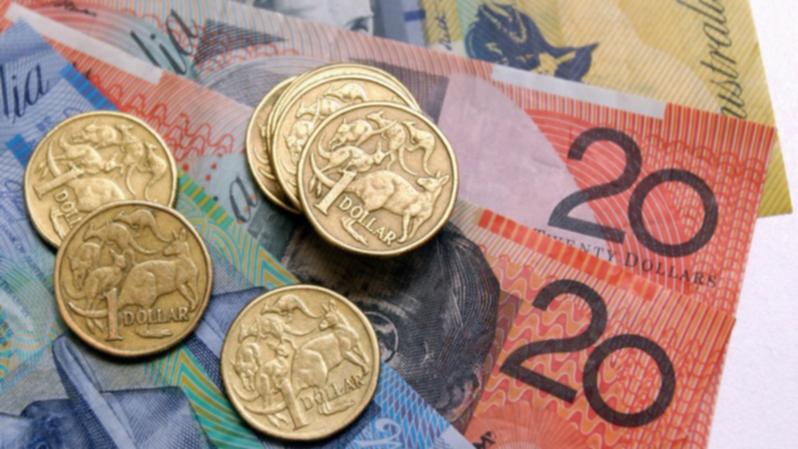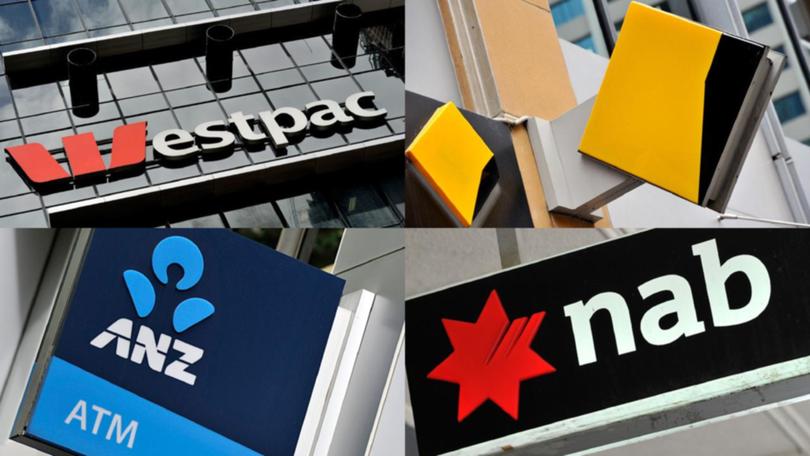RBA interest rates recap: Reserve Bank of Australia’s November board meeting call revealed

BOARD HOLDS AGAIN: Saddle up for three big events today that are all champing at the bit to change the course of history.
OK, that may be a bit of an overstatement … but how often do the stars align to deliver in one action-packed 24 hours a Reserve Bank rates call, a Melbourne Cup and a presidential election?
And before the nit-pickers pipe up with their clipboards and tell us that “technically, the US election is tomorrow in Australia when you account for the time difference”, save it.
Right now it’s November 5. Just how you justify having a drink in the departure lounge at 7am because “somewhere in the world it’s beer o’clock”, the US goes to the polls on November 5. That’s today. Deal with it.
And if you want to kick off this triple threat with a dead cert, start with the RBA continuing its long run of holding the official interest rate at 4.35 per cent ... just as it has for every meeting since November last year.
The chance of the board declaring an end to the war on inflation and easing the credit purse strings is about as likely as Donald Trump getting to the end of a rally without his pants on fire.
But what every squeezed household with a mortgage will be hoping for is a softening in language about the timing of the first cut, which most experts agree will come in February. Some less optimistic commentators are now saying May.
Price growth has steadily declined in recent months, with data last week showing headline inflation back within the RBA’s 2 to 3 per cent target range, aided by government energy bill rebates. Strip out such volatility and it’s still running at an annual 3.5 per cent.
That, along with continuing strength in the labour market, is all the cover the board needs to push back against growing cries for relief and keep rates on hold. It’ll probably be the same story at its December meeting. Sorry, no early Christmas stocking stuffers.
RBA governor Michele Bullock has been consistent in her message — the board wants to see inflation sitting “sustainably” within that 2 to 3 per cent range. One data set is unlikely to tick that box.
But, forget all that. It’s Cup Day (and possibly the start of a new American revolution) so grab the champagne and — if you have any money left after paying the mortgage — consider an across-the-field flutter.
Until the RBA starts cutting, for now it’s all about the little victories.
Giddy-up.
Key events
05 Nov 2024 - 11:48 AM
Lag effect puts RBA behind its peers
05 Nov 2024 - 11:43 AM
Mixed views on future rate cuts
05 Nov 2024 - 11:36 AM
What the RBA had to say ...
05 Nov 2024 - 11:30 AM
And it’s a hold ... again!
05 Nov 2024 - 11:20 AM
A joke? No, here’s REAL superpower behind #girlmath
05 Nov 2024 - 11:11 AM
Retailers ready for jingle tills
05 Nov 2024 - 10:39 AM
Here’s how much big banks REALLY make from your mortgage
05 Nov 2024 - 10:34 AM
Wallet feeling lighter? ‘Don’t blame the corporates’
05 Nov 2024 - 10:28 AM
The arguments for keeping rates on hold ...
05 Nov 2024 - 10:13 AM
With the RBA staying schtum, the dog days are over!
05 Nov 2024 - 10:10 AM
Is US election holding back a move from the RBA?
05 Nov 2024 - 10:02 AM
Homeowners struggle to keep up, urged not to wait
A joke? No, here’s REAL superpower behind #girlmath
When you decode the girl math phenomenon, it’s actually genius. It’s making financial acumen for girls and women fun. Harnessing that same creativity can supercharge our savings and investment goals.
Read the full story here
Retailers ready for jingle tills
Research out today from professional services company Accenture suggest that at last there may be some positive news for retailers.
Against the backdrop of slowed first-quarter sales, revenue for many major players, findings suggest that retailers have good reason to be cautiously optimistic this holiday season.
Consumers are planning on increasing their spend, with average holiday spend expected to reach $819. However, this optimism comes with a reminder that price and value remain top of mind for many shoppers, making it critical for retailers to adapt.
Some 70 per cent of consumers are prioritising value and 31 per cent waiting for sales.
Oh yeah, the election ...
For all those investors worried about what will happen if Trump gets back the keys to the White House - or if Harris comes just ahead in what promises to be a photo-finish election - AMP guru Shane Oliver has the answer ...
It’s getting close ...
We’re just half an hour away from the RBA’s latest rates call.
It will hold just one more meeting this year on December 9 and 10.
It won;t meet again until February next year, when most market watchers predict it will makea move on cutting rates.
Here are today’s punters’ big calls ...
Here’s how much big banks REALLY make from your mortgage
Australia’s big four banks pocket more than $200,000 profit on the average Australian home loan.
New research by the Australia Institute shows the big four banks made $17.6 billion from owner-occupier loans in 2023-2024 out of a total pre-tax profit of $44.6b.
Australian Institute senior economist Matt Grudnoff said mortgage holders, particularly new ones, were bearing the brunt of the cost-of-living crisis due to a lack of competition among the banks.

Australia Institute research shows the big four banks profit by $9130 in the first year from households with an average owner-occupier home loan.
For the first year of the loan, the average Aussie will give the banks $761 each month or $176 a week straight to the bank’s bottom line.
Over the average 30-year home loan, that amounts to $200,880 - or 35 per cent on the average $574,2000 home loan.
While acknowledging that APRA says Australia has 141 authorised deposit-taking institutions, Mr Grudnoff said the policy backdrop favoured the big four banks, with the sheer size of them dominating these smaller players.
“What is really needed are stronger competition laws and divestiture powers to break up the big banks to bring more competition into the market,” he said.
The left-leabing Australia Institute also found that customers were not switching providers for a better deal, which could cost them thousands of dollars over the life of a loan.
Wallet feeling lighter? ‘Don’t blame the corporates’
The chairman of Bunnings and Kmart owner Wesfarmers has accused politicians of bashing big business to curry favour with voters, saying “profit seems to be a dirty word”.
Michael Chaney says critics accusing Australia’s big companies of profiteering are chasing political mileage to score points in the cost-of-living debate but ignoring the importance of business to the national economy.
“Now for some external parties, profit seems to be a dirty word, but it is important to understand how profitable businesses are essential to our economy and future prosperity,” Mr Chaney told 1300 faithful shareholders at Wesfarmers’ packed annual meeting in Perth late last week.
“It would be good to hear political leaders of all persuasions acknowledge their understanding of these facts – that large companies like ours constitute a vital part of the economy, generate enormous benefits to the community and make a huge contribution to society.
“It’s unfortunate if (they) think that there’s political mileage to be gained out of criticising big companies.”
Read the full story here
The arguments for keeping rates on hold ...
The Reserve Bank of Australia is likely to keep interest rates on hold for several reasons:
- Inflationary pressures: While inflation has been easing, trimmed mean inflation (which strips out volatile items like enegery rebates) remains above the RBA’s target range of 2 to 3 per cent. As we’ve heard repeatedly this year, it’s likely to maintain a cautious stance to ensure inflation doesn’t rebound.
- Economic uncertainty: The global economy is facing several challenges, including geopolitical tensions, trade disputes, and the lingering impact of the COVID-19 pandemic. This uncertainty could yet affect Australia’s domestic economy, making the RBA hesitant to make any significant changes to interest rates. It has repeatedly mention geopolitical tensions in past statements on whether to cut rates.
- Housing market: The housing market in Australia has been showing signs of cooling (unless you live in Perth) which could impact consumer spending and economic growth. The RBA may want to avoid further tightening that could exacerbate a slowdown in the housing market.
- Labour market: The labour market in remains relatively strong, with low unemployment rates. The RBA may fear any further increase in rates would risk slowing down economic growth and job creation.
So, for now (and since November last year when it last changed the official cash rate) it’s adopting a wait-and-see approach.
ASX drops ahead of rates decision
The Australian share market is trading lower midway through the session as investors tread cautiously ahead of the Reserve Bank’s rate decision and a tight US presidential election.
The S&P/ASX200 index was down 42.9 points, or 0.53 per cent, to 8121.70, while the all ordinaries was down 44.9 points, or 0.53 per cent, to 8,377.90.
The ASX was a sea of red, with all sectors trading lower as traders preferred to sit out the uncertainty over the next couple of sessions.
Globally, investors are also wary of the outcome of the US election, with opinion polls suggesting the Republican candidate Donald Trump and Democratic rival Kamala Harris are in a photo finish in the race to the White House.
In the local market, losses were led by heavyweight financial and consumer stocks, while technology shares also traded deep in the red.
With the RBA staying schtum, the dog days are over!
Originally published on The West Australian
